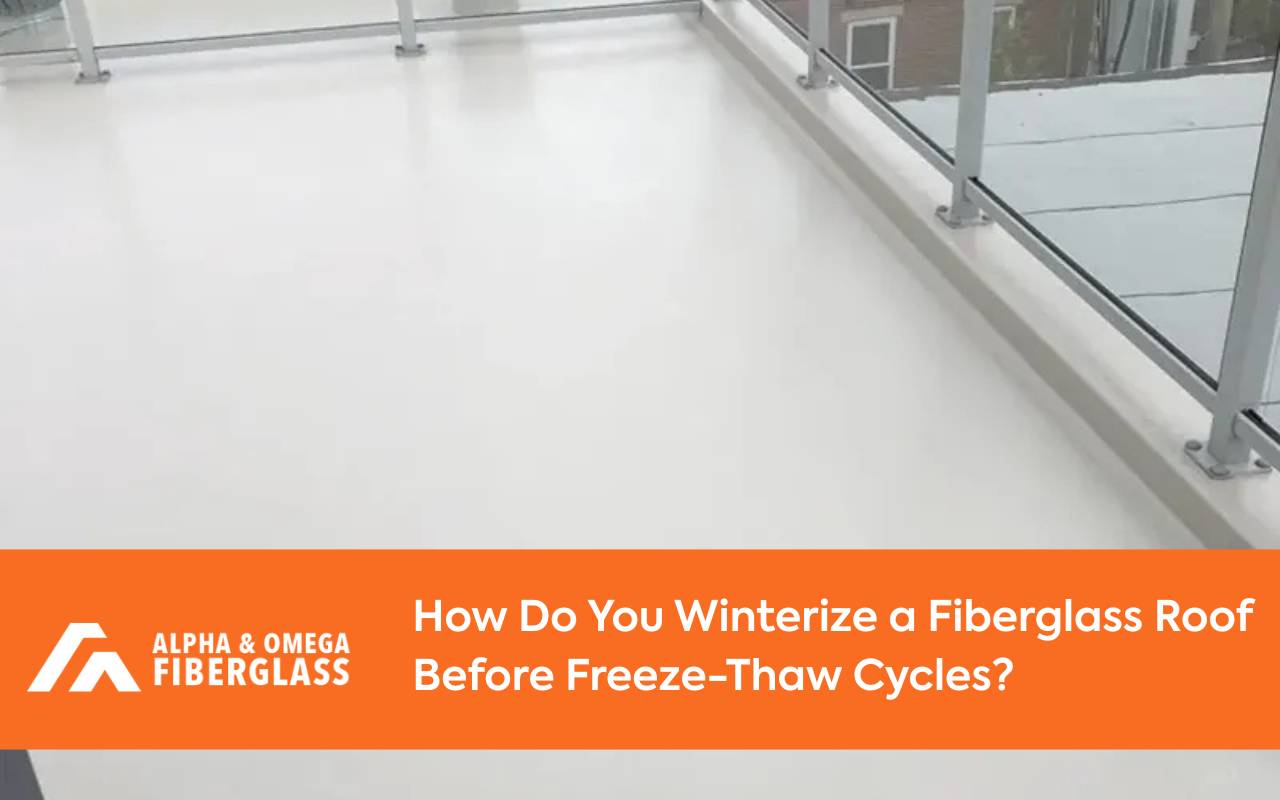
How Do You Winterize a Fiberglass Roof Before Freeze-Thaw Cycles?
Prepare now to Winterize Fiberglass Roof systems before ice arrives. Doing so prevents leaks, structural stress, and costly spring repairs. Proper inspection timing, cold-weather sealants, and drain heat tracing work together. These measures also boost ponding prevention and extend service life through repeated freeze–thaw cycles.
Why Winterizing Your Fiberglass Roof Matters
Freeze–thaw action widens tiny gaps and weakens laminates. Early work limits moisture intrusion and sagging. Moreover, ponding prevention reduces algae and mold. Schedule inspection timing in late fall to find issues before deep cold. Finally, act quickly to keep interiors safe and dry all winter.
Pre-Season Inspection Timing
Set your inspection timing before the first frost. Choose a clear day after leaves fall. Safety first, always.
Survey the surface for discoloration, blisters, and standing water.
Note soft spots, exposed fibers, or lifted flashings.
Photograph defects to guide repairs and track changes.
Plan materials and labor while suppliers still have stock.
Applying Cold-Weather Sealants
To effectively Winterize Fiberglass Roof assemblies, choose cold-weather sealants rated for low temperatures. Clean, dry, and prime where needed. Then apply continuous beads.
Degrease seams, penetrations, and flashings thoroughly.
Tool the bead for full contact and smooth edges.
Respect cure times before exposure to rain or snow.
Recheck high-stress details after the first hard freeze.
Drain Heat Tracing for Clear Flow
Drain heat tracing keeps gutters and downspouts open. Warm cables prevent ice blockages and overflow during thaws. Thermostats control energy use.
Route cables along eaves, scuppers, gutters, and leaders.
Secure per manufacturer spacing to avoid hot spots.
Use GFCI-protected circuits and labeled breakers.
Test activation near 32°F to confirm reliable operation.
Debris Clearing and Ponding Prevention
Leaves trap moisture and cause ponding. Gently sweep with soft tools. Avoid abrasion that could scar the laminate. Improve slope where water lingers.
Crack and Damage Checks
Examine for hairline fractures, punctures, and blisters. Even tiny flaws admit water that expands when frozen. Patch compromised areas before storms.
Insulation and Ice Dam Protection
Balanced insulation keeps the deck temperature consistent. This reduces melt–refreeze cycles at eaves. Seal air leaks around vents and chimneys.
Monitoring Through Winter
Continue to Winterize Fiberglass Roof performance with periodic checks. After heavy snow, verify drainage paths. Address bubbling sealant or blocked scuppers promptly.
Frequently Asked Questions
When should I schedule inspection timing?
Late fall is ideal, after leaf drop and before lasting snow. This window reveals issues clearly.
Do cold-weather sealants cure in freezing conditions?
Many do, but confirm the manufacturer’s temperature range. Follow the stated surface prep and cure times.
Is drain heat tracing expensive to run?
Thermostat control limits runtime. Properly sized cables use modest power during freezing events.
How do I handle localized ponding?
Clean drains, then add tapered insulation or adjust scuppers. These steps support ponding prevention effectively.
Can I personally Winterize Fiberglass Roof systems?
Yes, for light tasks. However, complex repairs and electrical work need licensed professionals for safety.
Internal Resources and Next Steps
Explore our fiberglass roof services to fully Winterize Fiberglass Roof assemblies. For complementary upgrades, view railing installation options. Learn more about us at Alpha & Omega Fiberglass. Finally, contact our team to plan materials, schedule work, and confidently Winterize Fiberglass Roof systems before deep cold.